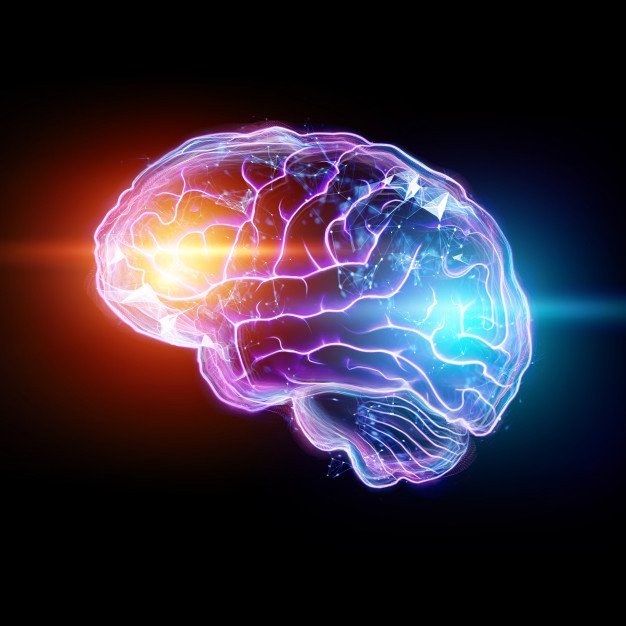Stroke in young people: Complications and long-term consequences
The article was written by MSc Vu Duy Dung - Doctor of Neurology - Department of General Internal Medicine - Vinmec Times City International Hospital
Cumulative mortality 20 years after stroke in young people (30%) is 4 times higher than in healthy people of the same age. Patients with cardioembolic stroke or macrovascular disease have the highest risk of recurrent stroke, compared with other TOAST stroke subtypes, underscoring the importance of secondary prevention in this patient. Therefore, in high-risk patients, lifestyle changes and adherence should be emphasized during counseling.
1. Survival prognosis for people with stroke
Counseling young patients and their families about the impact of stroke is preferably multi-specialty and should be done during hospitalization and during rehabilitation, targeting physical and psychological consequences. possible social justice in the long run. The prognosis of stroke in young patients and associated risk factors is outlined in Table 2.
| Các yếu tố nguy cơ | |
| Lo âu | Trình độ học vấn thấp, tiền sử trầm cảm, thất nghiệp, và sử dụng rượu |
| Đau trung ương sau đột quỵ | Các ổ nhồi máu nặng có chuyển dạng chảy máu |
| Suy giảm nhận thức | Nhồi máu trên lều |
| Trầm cảm | Trình độ học vấn thấp và thất nghiệp |
| Tử vong | Tuổi cao (40 – 50 tuổi), giới nam, tiền sử đột quỵ do thuyên tắc mạch từ tim, và có nguyên nhân đột quỵ kèm theo |
| Động kinh sau đột quỵ | Mức độ nặng của đột quỵ, tiền sử đột quỵ do xơ vữa động mạch lớn, các cơn động kinh sớm (trong vòng 7 ngày đột quỵ), tổn thương vỏ não, và tổn thương diện động mạch não giữa |
| Mệt mỏi sau đột quỵ | Các triệu chứng trầm cảm sau đột quỵ, lo âu, và các biến cố mạch máu não tái diễn |
| Đột quỵ tái phát | Tuổi cao (40 – 50 tuổi), giới nam, tiền sử có các yếu tố nguy cơ tim mạch, đột quỵ do xơ vữa mạch, đột quỵ do thuyên tắc mạch từ tim, và đột quỵ ổ khuyết |
| Nguy cơ tự sát | Giới nam, sống một mình khi khởi phát đột quỵ, thu nhập thấp, trình độ học vấn thấp, đột quỵ nặng (ngủ gà hoặc mất ý thức lúc nhập viện), và trầm cảm sau đột quỵ |
| Rối loạn chức năng tình dục | Trầm cảm và sử dụng các thuốc ức chế men chuyển angiotensin |
| Thất nghiệp | Điểm NIHSS cao lúc nhập viện, thời gian theo dõi dài, giới nữ, nghề nghiệp tự do trước đột quỵ, và trình độ nghiệp vụ thấp |
NIHSS = National Institutes of Health Stroke Score
A prospective Dutch study of 537 young patients with ischemic stroke reported a cumulative risk for post-stroke epilepsy of 12.7% after 9.8 years of follow-up. Patients with post-stroke epilepsy also had a worse functional outcome on both the modified Rankin score (mRS) and the instrumental daily living activity score (iADL) (27.5% vs. .8% had an mRS score > 2; 27.8% compared with 12.6% had an iADL score < 8) than those without epilepsy.
The SeLECT score is a prognostic model that includes several stroke-related measures, such as severity and location of brain damage, that have been designed to quantify the risk of late seizures in patients with after stroke. It can be used to counsel patients, although it should be interpreted with caution, as the study did not include young people with stroke. Depending on patient preference, treatment may include antiepileptic agents, although there is no formal evidence, in the form of randomized controlled trials, for this approach in these patients. young person.
A significant proportion of young people who have had a stroke (>50%) have impairment in many areas of cognition, even up to 11 years after the stroke. Impaired working memory, processing speed, and overall cognitive impairment were associated with poor outcomes in iADL. Young patients appear to have a better cognitive prognosis than elderly patients; However, with them having a long life ahead of them and impacting everyday life, cognitive function needs to be monitored in clinical practice. 41% of young people who have had a stroke have fatigue, twice as much as healthy people of the same age.
Patients with more common post-stroke fatigue have a poor functional outcome (mRS > 2: 13% vs 1%; iADL < 8: 15% vs 1%) and rate impairment information processing (34% versus 6%) compared with healthy controls of the same age.
A randomized controlled phase 2 trial of 36 patients (mean age 63 years, SD 15) with post-stroke fatigue found a significant reduction in fatigue and an improvement in quality of life at 6 weeks daily modafinil treatment. More studies on modafinil treatment are needed to apply this treatment in clinical practice. Exercise therapy combined with cognitive therapy seems to reduce fatigue after stroke; however, evidence is scarce, and more research is needed.

Người trẻ bị đột quỵ sẽ gây suy giảm trí nhớ nghiêm trọng
The prevalence of depressive symptoms was found to be nearly 3 times higher in young stroke patients than in healthy controls of the same age in one study (17% vs. 6%). Young stroke patients had an anxiety prevalence approximately twice that of controls (23% vs 12%). High prevalence of anxiety is associated with a poor functional outcome, and may also lead to avoidance of daily activities. Post-stroke patients were two times more likely to have suicidal ideation and three to six times more likely to commit suicide compared with healthy controls. Since patients do not always voice these thoughts, proactively asking about these thoughts gives us the opportunity to refer them to a psychologist or psychiatrist.
A cohort study of 104 young adults with ischemic stroke reported sexual dysfunction in 30 patients (29%) 1 year after stroke. Many factors can aggravate sexual dysfunction – eg, type of injury, medications (including angiotensin-converting enzyme inhibitors), depression and anxiety. Given the high prevalence of sexual dysfunction and its impact on quality of life, this issue should be addressed during follow-up and consultation with a urologist about treatment.
Central post-stroke pain was present in 49 (6%) of 824 young stroke survivors, also reducing their quality of life. Severe infarcts with hemorrhagic transformation are more likely to be associated with central pain after stroke. Appropriate treatment (eg, neuroleptics) should be instituted, if necessary.
A study in the Netherlands found that 202 (29.1%) of 694 young people with a stroke were unemployed, even up to 8 years after their stroke, compared with a study in Denmark that found unemployment in 3322 ( 33%) of 9930 patients 2 years after stroke. Ideally, there is an occupational therapist on the multidisciplinary team, to provide information to patients and their loved ones about work reintegration and social safety concerns. .

Đột quỵ ở người trẻ đang trở thành căn bệnh phổ biến ở giới trẻ
2. Conclusions and future stroke treatment studies
Stroke at a young age is a social challenge with an increasing incidence. It has lifelong consequences for young people who suffer a stroke at key moments in their lives, with an accompanying socioeconomic burden. The increasing incidence of stroke in young people is accompanied by an increase in traditional risk factors (eg, hypertension and smoking) and illicit substance use. These trends call for better prevention and, as one-third of cases remain idiopathic, additional search for new risk factors is necessary.
Much progress has been made in the management of specific causes of stroke in young adults, such as closing PFOs in high-risk patients. Because of their young age and long survival expectations, counseling young people with stroke about their post-stroke outcomes will be different from those of older stroke patients (eg, contemplating pregnancy and unemployment) and should therefore be recommended. is multi-specialty.
Future research needs to provide more insights into the biological pathways underlying stroke. For example, the nature of intracranial and extracranial arterial disease responsible for 10-20% of all strokes in young adults (depending on the definition of arterial disease) cannot be clearly seen with conventional imaging techniques. because they show only the diameter of the artery rather than the pathology of the vessel wall (eg, arterial dissection, atherosclerotic artery disease, and vasculitis).
The development of MRI techniques to distinguish these pathologies is a long-awaited future step, as these different pathologies can have similar imaging findings. Furthermore, high-power genomic techniques will yield a wealth of knowledge about stroke mechanisms, by identifying novel stroke risk gene loci and genes involved in single-gene microvascular disease, such as COL4A1. These future advances promise to accelerate the development of new drugs and new treatment strategies.
To screen for stroke, Vinmec doctors can prescribe brain MRI without injecting magnetic contrast, with 3D MRA TOF pulses, supplemented with Axial T2W and or axial FLAIR pulses for 7 minutes, helping to detect present brain aneurysm lesions, cerebral arteriovenous malformation, dural arteriovenous fistula, cerebral artery stenosis and some abnormalities in brain parenchyma. When there is an abnormality on the cerebral blood vessels, the doctor will prescribe a magnetic contrast pump to investigate more cerebral vascular imaging (MRA). From there, there is an accurate assessment of the shape and size of the abnormality to give appropriate treatment indications.

Hệ thống máy chụp cộng hưởng từ MRI 3.0 Tesla hiện đại tại Bệnh viện Vinmec Hải Phòng
The 3.0 Tesla MRI system at Vinmec hospitals across the country is equipped with state-of-the-art equipment by GE Healthcare (USA) with high image quality, allowing for a comprehensive assessment, not missing the damage but reducing the damage. shooting time. Silent technology helps to reduce noise, create comfort and reduce stress for customers during shooting, resulting in better image quality and shorter shooting time.
Để đặt lịch khám tại viện, Quý khách vui lòng bấm số HOTLINE hoặc đặt lịch trực tiếp TẠI ĐÂY. Tải và đặt lịch khám tự động trên ứng dụng MyVinmec để quản lý, theo dõi lịch và đặt hẹn mọi lúc mọi nơi ngay trên ứng dụng.
Although there is a wide variation in risk factors and causes between young and old patients with stroke, they do not frequently have different secondary prevention, due to the absence of prospective studies. a separate secondary room for young people. Therefore, future research should include secondary prevention trials specific to this population.
The development of reliable prognostic models, based on clinical, radiological and genetic data will make it possible to personalize counseling and treatment for patients who can benefit greatly from specific treatment or patients with a poor prognosis. Pooled analysis of individual patient data is one of the preferred approaches to building these models.
Global efforts to assess variability in risk factors, etiology, and prognosis, involving centers on all continents, are currently underway. The development of specific guidelines specifically for young people with stroke has been long awaited.
References source:
Ekker MS, Boot EM, Singhal AB, Tan KS, Debette S, Tuladhar AM, de Leeuw FE. Epidemiology, aetiology, and management of ischaemic stroke in young adults. Lancet Neurol 2018; 17: 790-801.
Bài viết này được viết cho người đọc tại Sài Gòn, Hà Nội, Hồ Chí Minh, Phú Quốc, Nha Trang, Hạ Long, Hải Phòng, Đà Nẵng.






